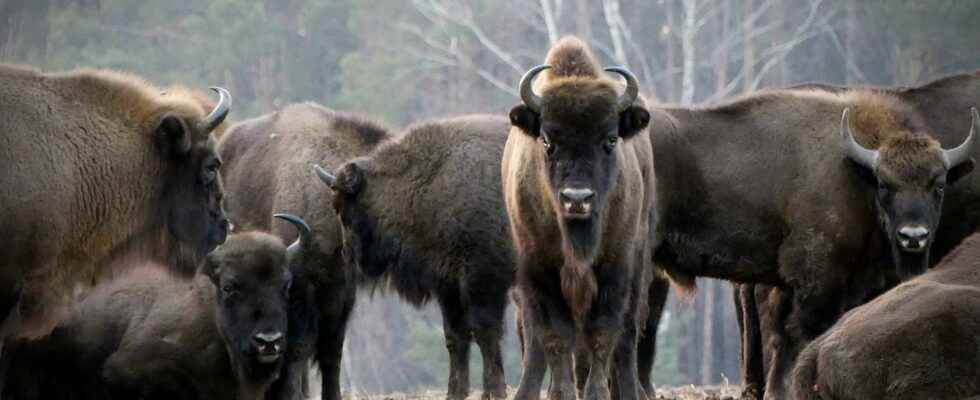You will also be interested
[EN VIDÉO] Are biodiversity and economy compatible? Some advocate green growth, others are moving towards stagnation or a decline in the economy… If the solution to reconcile the economy with respect for nature does not seem clear, it remains obvious that our model must evolve. . You have to innovate. And what better source of inspiration than the only company that has been innovating every day since the dawn of its existence?
Some species animals have a greater impact than others on theecosystem which they occupy. These are “keystone species”, species which ensure the ecological balance of their environment and whose protection, or reintroduction, makes it possible to restore degraded natural areas. Among these key species, we obviously find pollinators such as the beesbut also earthworms or even the stars of sea. But some of the largest mammals terrestrial are also part of it.
Reintroducing large predators and herbivores restores biodiversity
A study of the organization Resolve and the United Nations Environment Program (Unep) highlights light the fact that the reintroduction of certain large, sometimes unloved mammals would have a remarkable effect on the global restoration of the biodiversity of our planet. The study, published in the journal Ecographyidentifies 7 predators and 13 herbivores essential to the ecological balance of different regions of the globe:
- In Europe, the reintroduction of european bisonEurasian beaver, reindeerwolf and lynx would restore historical populations of large mammals in 35 ecoregions.
- In Asia, the reintroduction of wild horses and wolves to the Himalayas would increase the number of large mammals in the region by 89%.
- In Africa, the reintroduction of hippos, cheetahsofantelopes tsessebe municipalities, of lycaons and of lions could more than double biodiversity.
- In North America, targeted reintroduction or improved protection of black bears american, american bison and gluttonous would have a major impact on the wildlife and flora.
- In South America, the reintroduction of jaguarpacarana, pampas deer, swamp deer and white-lipped peccary would “renature” hundreds of thousands of square kilometres.
An impact on vegetation and carbon sequestration
According to Unep, only 15% of the earth’s land is currently occupied by large mammals. The reintroduction of these key species, in identified and suitable areas, could allow biodiversity to recover on 1/4 of the Planet thanks to their action on the food chain.
A notable example of recent years is the reintroduction of the wolf in Yellowstone National Park in the United States in the 1990s: predators have, among other things, allowed rivers and meadows to regenerate, because they force herbivores, such as deer, to move constantly. Vegetation has been able to renew and diversify further, allowing many endangered species to multiply, such as beavers. In their turn, beaver action allowed the Pisces rivers to reproduce more, and these fish were then able to feed other species.
At the climatic level, we now know that greater plant and animal biodiversity makes it possible to sequester more carbon dioxide in the ground, this greenhouse gas who is one of the main responsible for the global warming. Just like the oceans, forests and grasslands are real carbon sinkand the greater the plant diversity, the greater thecarbon uptake by plants, towards the ground. The reintroduction of large mammals therefore makes it possible not only to restore the entire cycle of biodiversity, but also to participate in the mitigation of global warming.
Interested in what you just read?
